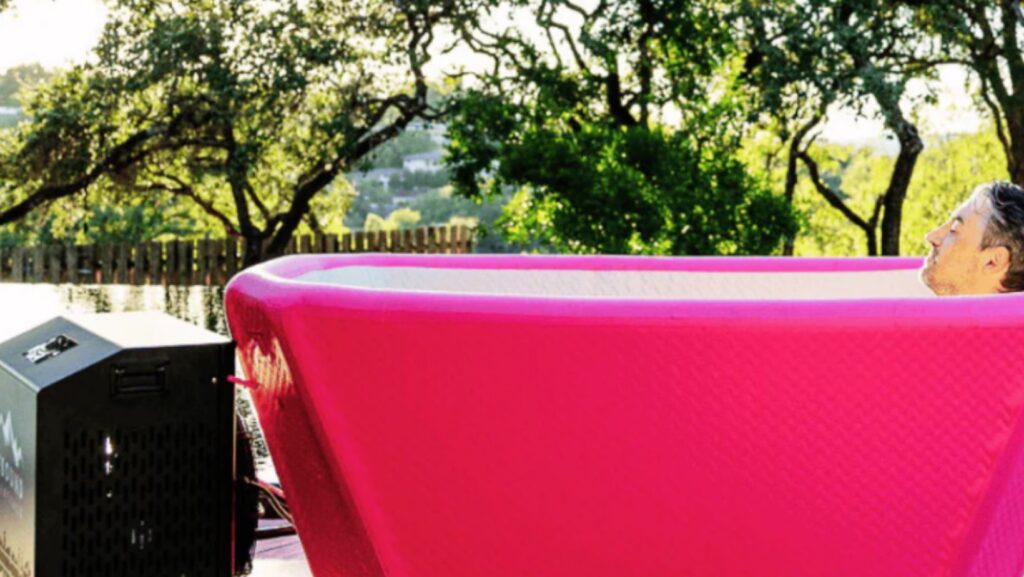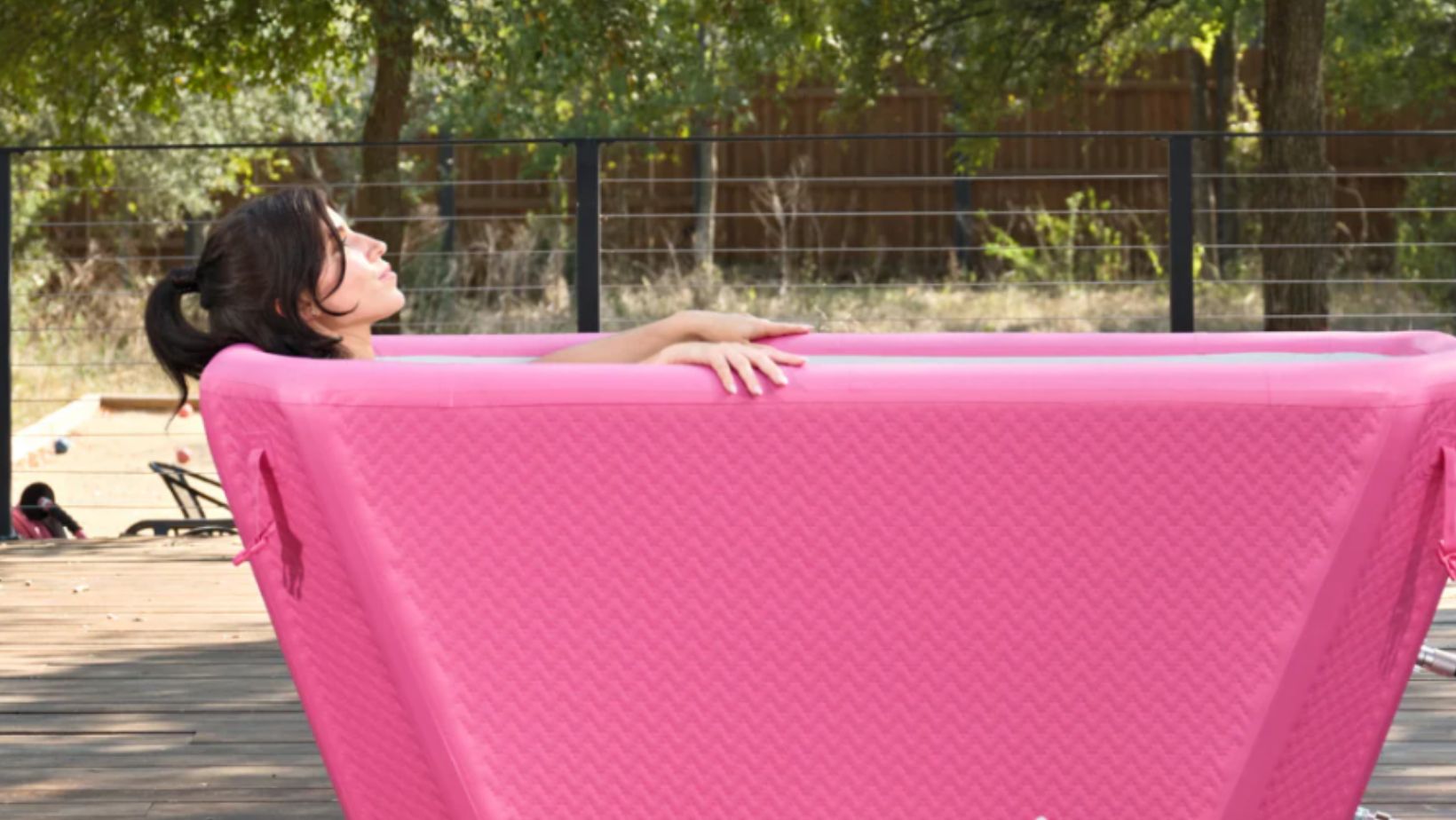The science of recovery has made tremendous leaps and bounds in the past few years – and it’s now one of the most crucial aspects of your performance as an athlete.
In modern competition, athletes push harder and perform longer — before the point they’re likely to tear a tendon or cramp up. However, the body has biological limits; no amount of talent can circumvent them. Muscle fibers rip under strain, metabolic waste products are stored, and the nervous system becomes fatigued. Today’s sports medicine acknowledges that the most effective recovery methods are just as crucial as training routines. This is where cold exposure gets its good name.
For years, professional athletes have sworn by ice baths and cryotherapy as a way to soothe aching muscles. But as recovery techniques have evolved, so has a more regulated, accessible, and better alternative—cold plunge tubs.
Now, these tubs are a staple in post-training recovery regimens, supported by both tradition and modern science.
Understanding why athletes are drawn to this practice can help provide insight into the crossover between physiological performance and long-term health.
1. Better Muscle Recovery Through a Cold Plunge Tub
To alleviate muscle ache and speed up the healing process, athletes often use a cold plunge tub. Microscopic tears and inflammation develop when muscles are exerted hard. Icing causes vasoconstriction, in which blood vessels constrict, reducing swelling. When the body warms up again, blood flow speeds up, and lactic acid and other waste products are flushed out.
This cycle of dilation and contraction promotes speedier recovery and less post-workout soreness. Cold therapy is a feature that does more than encourage rest; it actually aids recovery with cold treatment. Athletes can recover more quickly and train sooner, thus requiring less downtime, making it an essential practice to be used consistently throughout rigorous regimens.
2. Prevention of Inflammation and Joint Stress
A greater challenge is the chronic inflammation experienced by athletes participating in high-impact sports. Our joints, tendons, and ligaments are repeatedly subjected to stress, which can result in swelling, stiffness, and pain.
Cold plunge tubs act as an anti-inflammatory intervention by slowing down metabolic activity in stressed tissues. The reduced temperature numbs nerve endings and minimizes swelling around joints.
This technique is particularly useful for athletes dealing with chronic conditions such as tendinitis or arthritis. By reducing inflammation, cold immersion enables athletes to maintain the function of their joints and remain pain-free throughout their careers. It’s then not only an acute recovery tool, but also a preventive measure against all-overuse injuries.
3. Regulation of the Nervous System
Training and competition are hard on more than just muscles. Cold exposure has been shown to affect the autonomic nervous system, shifting the body from a sympathetic “fight or flight” state to a more parasympathetic “rest and recover” state.
Cold exposure activates the nervous system, which in turn decreases cortisol production and alleviates brain fog. Cold Plunging athletes describe an increased clarity, emotional balance and feeling of calm in the hours following sessions.
4. Improved Circulation and Oxygen Delivery
The cold plunge is an effective way to keep your veins healthy and promotes vascular conditioning through alternating dilation and constriction of the veins. This is a vascular workout that improves circulation efficiency and oxygen routing to the muscles and organs. Better blood flow means more nutrients reach the muscles, and a faster approach to removing toxins from the body.
Athletes who participate in long-distance events, such as cycling or marathon running, reap numerous benefits from this cardiovascular workout. It helps maintain endurance during training and minimizes the cumulative effects of repeated bouts of overexertion on cardiovascular health. Essentially, cold therapy doesn’t just repair the body; it works to supercharge its long-term potential for enduring performance.
5. Improved Quality of Sleep and Hormones that Promote Recovery
Sleep is the most potent recovery tool for athletes. Cold exposure before bed has even been found to help promote better sleep quality by lowering core temperature and relaxing the nervous system. The lowering of body temperature signals to the brain that it’s time to sleep, leading to more rapid transitions into sleep and deeper, restorative cycles.
Better sleep likely leads to the production of more recovery-boosting hormones such as growth hormone and melatonin. These hormones are essential for muscle recovery, immune reaction and mental acuity. This has been translated into thermogenic training for athletes, but without the benefits of pre-bed training, in terms of recovery and cognitive performance.
6. Strengthened Immune System Function
Exercise training is well associated with the suppression of immune function, which contributes to an increased risk of illness in athletes. Cold water exposure increases the production of white blood cells and improves lymphatic circulation. This makes for a more robust front line of defense against those microbes.
A new study has been linked to evidence of stress reduction. Moreover, research has discovered that exposure to repeated cold temperatures may train the immune system to better cope with stress. Compared to individuals who did not engage in hot plunge bathing, athletes who took regular cold plunges had fewer sick days and fewer interruptions to their training. The dual immune resistance and recovery-promoting effects of this practice make it an omnipotent performance enhancer.
7. Hormonal and Metabolic Benefits
Hormone regulation and metabolism are also affected by cold water immersion. People exposed to the cold more than once even experienced a greater release of norepinephrine, which results in both improved focus and increased energy. It also activates brown adipose tissue, a form of fat that generates heat and burns calories.
For athletes, this combined effect equals better training results and accelerated metabolism. This sets the body in motion, physiologically ready for action and metabolically efficient at energy production. These effects extend beyond simple recovery, contributing to full athletic longevity and optimal performance ability.
Conclusion
The study of recovery is far from complete, but cold treatment remains one of its fundamental elements. Cold plunge tubs are a modern adaptation of an ancient tradition, offering athletes a multifaceted tool to support muscular, neurological, immune, and metabolic health.
From minimizing inflammation and improving sleep to managing stress and increasing circulation, the benefits are diverse and profoundly transformative. For anyone who competes in sports or has an individual fitness routine, cold plunges can build several evident performance advantages into training regimens.
It’s not only about getting better faster. It’s about prolonging careers, preventing injuries, and maintaining peak performance year after year, which is why the concept continues to be pursued by athletes at all levels and in all disciplines, not as a fad, but as a science-based and performance-oriented approach driven by necessity.




More Stories
3479980831: Unveiling the Mystique of Number Sequences
HomeRocketRealty.com: Revolutionizing the Real Estate Experience
Boosting Property Value with Level 2 Electrician NSW: How I Ensured My Home Is Safe and Reliable